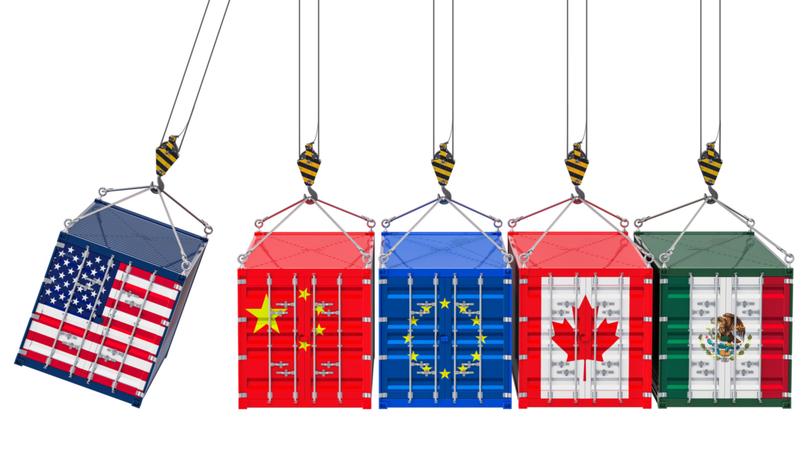S&P predicts President Donald Trump’s tariff policies will reduce growth in US and Asia

International ratings agency S&P Global has tallied up the impact of President Trump’s tariff policies and found that it will substantially reduce growth in the United States and across Asia.
Based on an announced 25 per cent tariff on goods from Canada and Mexico, and an additional 10 per cent tariff on Chinese imports, S&P estimates GDP in the US will fall by 0.6 per cent in the US, two to three per cent in Canada and Mexico and one per cent in China.
“The US-instigated tariffs and trading partner counter-tariffs will lead to across-the-board lower GDP growth, higher unemployment rates, and higher inflation,” S&P Global said, assuming that the US administration continues with its tariffs plan, which are currently on hold.
Sign up to The Nightly's newsletters.
Get the first look at the digital newspaper, curated daily stories and breaking headlines delivered to your inbox.
By continuing you agree to our Terms and Privacy Policy.S&P also expects ‘meaningful probability’ tariffs will be imposed on the Eurozone this year of 10 per cent, forcing the European Central Bank to cut rates more deeply than originally forecast.
The tariff policies would place further downward pressure on currencies against the US dollar, with S&P forecasting the US Federal Reserve will pause any further interest rate cuts this year as it tries to keep a lid on inflation. By
Any decline in Chinese demand will be watched closely by investors and the Government, given it accounting for a third of Australian exports.
So far, according to a recent report by the Reserve Bank of Australia, the imposition of tariffs under the previous Trump administration have not had a material impact on commodity exports but further tariffs may change that.
“Chinese demand for Australia’s iron ore has remained resilient, despite the sharp decline in demand from the real estate sector, largely due to the resilience of manufacturing investment and strong growth in Chinese steel exports to the rest of the world,” the RBA economists wrote.
“As international trade frictions have increased, authorities in China are considering ways to make their economy more resilient to (tariffs). Over time, the pursuit of self-sufficiency could lead to a decline in China’s trade with the rest of the world, which would directly affect the Australian economy through weaker demand for our exports.”
Elsewhere in Asia, the impact is expected to be more marginal. Lower exports to North America will slightly weaken growth, while increased competition in regional markets could lead to downward pressure on prices. The report notes that the US Federal Reserve’s likely decision to hold rates higher for longer could limit the ability of Asian central banks to cut rates.
Canada to experience stagflation
The S&P analysis warned that Canada’s economy was particularly vulnerable to US tariffs, warning that “stagflation” was possible as exports decline and consumer prices rise, particularly in the automotive sector.
It forecast that inflation could rise by nearly half a per cent, amid a 2.5 per cent drop in GDP. That would force the Bank of Canada to cut interest rates further than expected, forcing the Canadian dollar down by 10 per cent.
Instability to impact investment decisions
S&P Global warns that the unpredictable nature of the US administration’s tariff strategy — driven by a mix of economic and political objectives— creates an unstable environment for international trade and investment.
The ongoing deal-making mode of the new U.S. administration risks complicating long-term decision making by both firms and households. As such, it puts downward pressure on investment, demand more generally, and ultimately growth.
The report suggests that while agreements may be reached with Canada, Mexico, and China, the broader trend of trade tensions is unlikely to be resolved soon.

